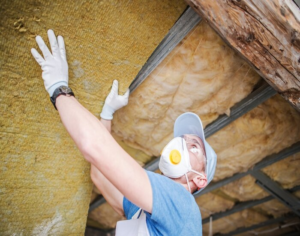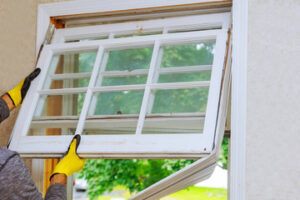Perth Insulation Removal is a messy and time-consuming project. It requires a powerful insulation removal vacuum, heavy-duty garbage bags, safety equipment (like dust masks and gloves), sturdy ladders or scaffolding, and lighting equipment to work in dark spaces.
A well-planned insulation removal project can dramatically improve your home’s comfort and energy efficiency. It also protects your home from structural damage and reduces environmental hazards.

Moldy insulation is a serious issue that can affect indoor air quality, contribute to structural damage, and weaken the integrity of the drywall in your home. If you suspect your insulation is dirty or moldy, it’s important to take action immediately.
The first thing to do is shut off the power to the area. Then, locate the source of mold and remove any affected drywall. If the mold extends into the interior walls, it’s necessary to hire a professional mold removal company. They’ll treat the mold and clean the contaminated drywall before replacing it with new drywall. They’ll also use fungicidal paint to kill any remaining mold spores.
It’s common for black mold to grow in attics or crawl spaces, but it can also appear in fiberglass and cellulose insulation. This type of mold thrives in damp and humid conditions and can cause severe health problems. Moldy insulation may smell musty and stale, and it’s often dark green or black in color.
Another sign of a mold problem is water spots or divots in the insulation. These marks are usually caused by condensation or drips from roof leaks. They can also indicate that the attic isn’t properly ventilated. If this is the case, you should increase ventilation and recheck the attic during a cold/winter period to see if you still have dripping.
In many cases, you can tell if your insulation is infested with mold simply by examining it. If you notice discoloration or a musty odor, then you should have it tested by a professional. The results will give you a clear picture of what’s happening inside your home, and your professional can come up with a treatment plan.
If you can’t find any visible signs of mold in your insulation, then you should schedule a virtual inspection with a professional mold remediation service. They’ll be able to check your insulation for mold and other issues that could be affecting your indoor air quality. They’ll provide a thorough assessment and an estimate for the cost of restoring your home to its healthy state.
Hazardous materials
Many older insulation materials contain hazardous substances that must be handled safely. It is critical to identify any potential hazards and follow specific guidelines for the safe removal, storage and disposal of these materials. For example, blown-in and batt insulation can contain asbestos or vermiculite. These materials should be removed by professionals who are trained in handling them safely and can dispose of them properly.
A poorly executed insulation removal process can leave your home vulnerable to moisture damage and mold growth. Insulation that has been exposed to moisture can develop mold, rot or structural problems in the walls, attic and ceilings of your home. This is why it’s important to address issues promptly, before they become worse.
In addition, if the insulation is contaminated with hazardous materials, it could expose you and your family to health risks. For example, if the insulation is contaminated with asbestos, it could be released into the air and cause respiratory problems. In addition, if the insulation has been exposed to vermiculite, it can release toxic particles into your home.
If you’re planning on tackling the job yourself, make sure that you have the proper safety equipment and that your workspace is sealed off from the rest of your home to prevent contamination and airborne pollutants. It is also a good idea to wear a mask or respirator to protect yourself from inhaling fiberglass particles. A dustpan and rake are also useful tools for clearing the workspace.
For large-scale projects, hiring a professional can help ensure that the job is done correctly and efficiently. This will help reduce costs and minimize any damage to your home. In addition, a professional can ensure that the old insulation is properly recycled or disposed of in accordance with local regulations.
For most homeowners, this isn’t a DIY project that should be tackled on a weekend. It’s a messy, labor-intensive job that requires the right tools and knowledge to be completed properly. The process can also be dangerous for those who lack experience and the proper equipment. Professionals are experienced in the identification of insulation types, conditions and hazards and are able to create a comprehensive removal plan that maximizes efficiency and minimizes cost.
Unwanted odors
Adding new insulation to your home or commercial property is a great way to improve energy efficiency. However, if your old insulation is damaged or contaminated, it could affect the way that air moves through your building. This can lead to higher energy bills and less comfort. In addition, damaged insulation can also attract pests and lead to health problems for the people living in your building.
Fortunately, it is possible to remove unwanted odors from an insulation installation. Whether the odor is from the spray foam or the older fiberglass material, it can be eliminated by replacing the existing material. However, it is important to make sure that the new insulation is properly installed to prevent odors from returning later on.
When it comes to spray foam insulation, the best method of preventing odors is to seal off the attic space completely from the conditioned space of your home or commercial property. However, this is only an effective solution if the closed-cell spray foam used in your property is of high quality. In many cases, cheaper spray foam will retain odors for longer than you might want.
The next most common cause of unwanted odors is rodent droppings and urine. These odors can be difficult to eliminate. If you are worried about rodents in your attic or crawl space, a professional can help you with a rodent control treatment.
It is important to note that you should never attempt to remove insulation without proper safety equipment. This includes a respirator mask, goggles, and protective clothing. It is also important to ensure that you have access to a HEPA-filter rated, large capacity vacuum. Using a small vacuum can be very dangerous, especially if it becomes blocked by old insulation.
Finally, you should check with your local waste management authority to see if they can accept the blown-in cellulose and fiberglass insulation for recycling. Some areas may have special drop-off locations for these materials, so it is best to do your research before attempting to dispose of them yourself. This will also help you avoid contaminating your trash can with the harmful chemicals in the insulation bags.
Unwanted noise
Insulation acts as a soundproofing barrier, dampening vibrations that can transmit noise from one room to another. This can help you get a better night’s rest and a more peaceful environment. However, not all insulation is created equal. The type of insulation you choose will determine how well it blocks and absorbs unwanted noise.
Whether you are looking for an energy-efficient solution or simply a quieter home, the right insulation can make all the difference. It is important to consult with professionals about the best options for your specific project and budget.
When installing insulation, a good place to start is in the attic. You’ll need to clear a path from your attic access to the rest of your house and cover any areas that you plan to work on to prevent any accidental damage to your walls or ceilings. Once you’ve cleared a path and set up your equipment (commercial vacuum and HEPA filtered shop-vac), make sure you wear your personal protective equipment, then climb into the attic and begin removing the old insulation. Start with the farthest corner and work your way toward your attic access door, placing each roll into a waste bag as you go.
Once you’ve removed all the cellulose or fiberglass insulation, contact your local waste management agency to find out how to properly dispose of it. Some places will recycle it, while others may have a special drop-off point for flammable insulation materials.
Another thing to keep in mind is that insulation can be damaged by pests, mold, and water damage. If this happens, the material loses its ability to prevent outside temperatures from transferring into your living spaces and will no longer perform as intended. This is why it’s important to inspect insulation regularly and replace any that has been compromised.
Insulation is an effective and affordable solution for reducing unwanted noises. By blocking and absorbing vibrations, it helps to create a more comfortable, stress-free space for you and your family. Having the proper insulation in your home can also lower energy bills and improve indoor air quality.
